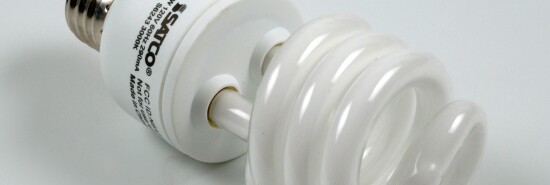
Lightbulbs, books, and abortions … when is a ban not a ban?
Timothy P. Carney
Video Embed
It is now illegal to manufacture, import, or sell the traditional lightbulb or any lightbulb that has not been shown to produce 45 lumens per watt.
If a retailer or manufacturer sells or creates such a bulb, the business will be fined $542 per bulb.
UP FOR DEBATE: TRUMP, DESANTIS, AND 2024 GOP HOPEFULS’ STANCE ON AI
The Department of Energy, in its guidance on enforcing the rule, wrote, “Generally, the Department seeks the maximum civil penalty against manufacturers and private labelers that knowingly distribute in commerce products or equipment that violate the federal energy or water conservation standards.”
But don’t call this a ban unless you want to get scolded by liberals in the media and lobbyists in the lightbulb industry.
“It’s not a ban,” Vox insisted, quoting two industry insiders. It’s merely an “efficiency standard.”
There’s some ambiguity here, to be sure. The federal regulations do not ban incandescent technology. The regulations instead ban all lightbulbs that cannot meet the 45-lumens-per-watt standard, which happens to include the regular old lightbulb that most of us have used for most of our lives.
“It just happens that the really inefficient lamps can’t meet the efficiency requirements, but they never banned incandescence,” one industry lobbyist told Vox.
Vox wasn’t the first outlet to claim this wasn’t a “ban.” The Washington Post’s fact-checker made that claim to ding Republican presidential nominee Mitt Romney during the 2012 campaign. Romney made the true statement that a federal law and Obama’s Energy Department “would have banned Thomas Edison’s lightbulb.” The Washington Post’s Glenn Kessler replied in a fact check, “We don’t see how higher efficiency standards translates into a ‘ban,’ especially when light manufacturers have embraced the new standards.”
The implied argument from the Washington Post and Vox is (1) if industry insiders like it, it’s not a ban; and (2) standards cannot count as a ban.
This really seems to narrow the definition of a “ban.” Are we just not using that word anymore?
Hardly.
“Why book banning is back,” Vox explained in a 2022 article. Here’s what counts as a “ban” when it comes to a book: “The removal of the Holocaust graphic novel Maus from a Tennessee school district’s eighth-grade curriculum or attempts to yank classics like The Handmaid’s Tale from library shelves.”
So a lightbulb isn’t banned if selling, importing, or making it gets you a $542 fine, but a book is banned if it’s perfectly available to every human in the world but not required as part of a curriculum?
What about an abortion bill that wouldn’t even cover 94% of all abortions but would set rules about the 6% that happen after 15 weeks — namely, abortions on babies past 15 weeks gestation may be performed only in cases of rape or incest, or to protect the life and physical health of the mother.
CLICK HERE TO READ MORE FROM THE WASHINGTON EXAMINER
It turns out that it gets called a “national abortion ban” by the editors and reporters at the Washington Post and Vox. (This, by the way, was the Democrats’ poll-tested term for the bill.)
It seems that whether something is a “ban” depends on whether Democrats and the news media think it should be banned, and if it should be banned, then banning it isn’t called a ban.
